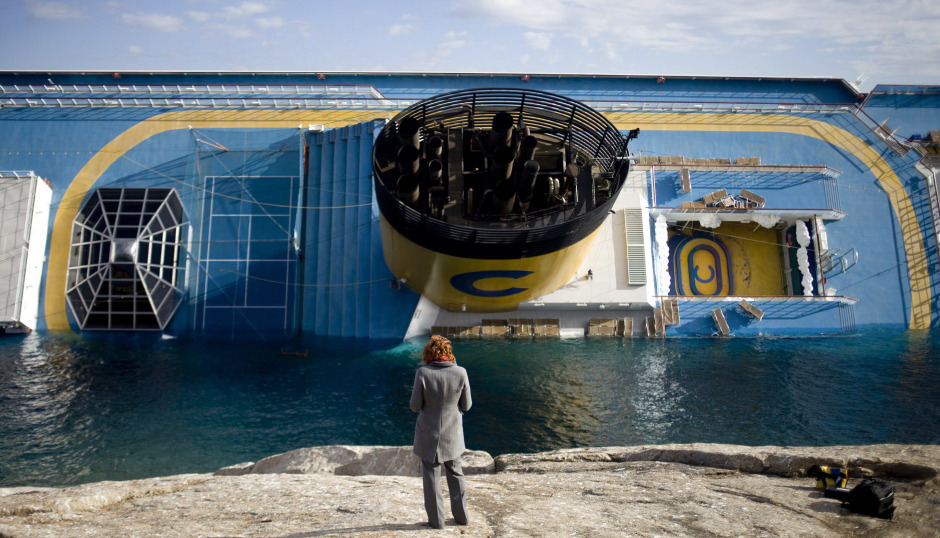
The Costa Concordia's owners accused their captain of causing Friday's disaster by veering the ship too close to shore, where it hit a rock, in a bravura "salute" to residents of a Tuscan island off Italy's Mediterranean coast.
Rescue workers carried out a series of controlled explosions on Tuesday to open up new entry points into the stricken liner Costa Concordia. The Italian mega-ship ran aground just off Giglio Island in Italy late on Friday.
Captain Francesco Schettino was arrested on Saturday accused of manslaughter and abandoning the ship before all people were evacuated, and he was due to appear before magistrates for questioning on Tuesday morning.
Prosecutors say Mr. Schettino also refused to go back on board when requested by the coastguard.
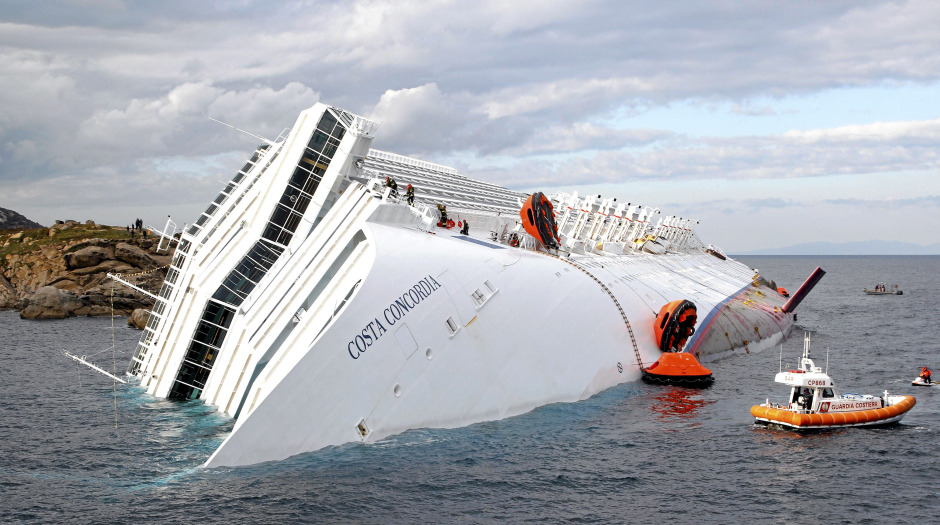
"Now we will have better access to the gathering points on the ship, where it seems there might be more chance of finding someone, dead or alive," said firefighters' spokesman Luca Cari."
"They will take micro-cameras in there, and we will be simultaneously looking at the few remaining dry areas and also the wet areas," he said.
The weather improved slightly from Monday but seas were still choppy.
The giant cruise liner slid a little on Monday, threatening to plunge 2,300 tonnes of fuel below the Mediterranean waters of the surrounding nature reserve.
The slippage forced rescuers to suspend efforts to find anyone still alive after three days in the capsized hull, resting on a jagged slope outside the picturesque harbour on the island of Giglio. Six bodies have been found. Most of the 4,200 passengers and crew survived, despite hours of chaos.
An Italian coastguard official told Reuters late on Monday that the number of people missing had been revised up to 29 - 25 passengers and four members of staff - from 16, showing how much uncertainty still surrounded the disaster.
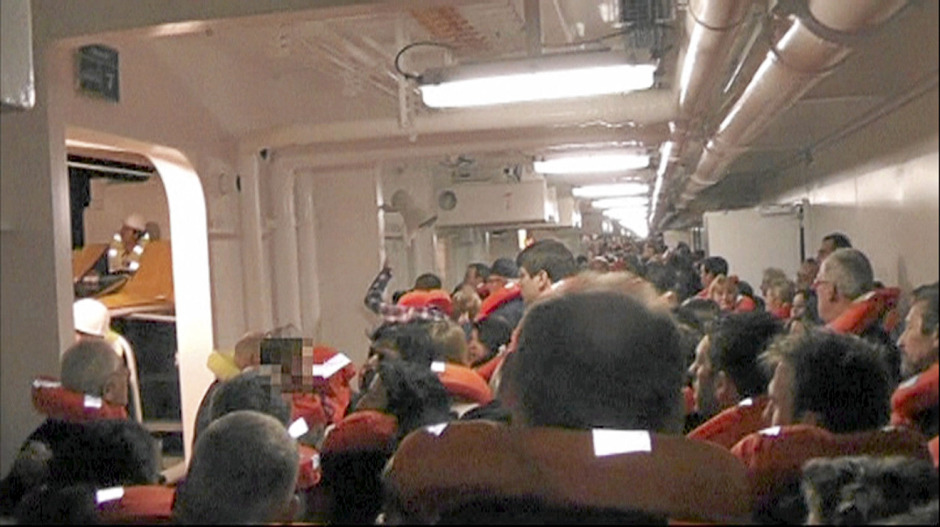
The 114,500-tonne ship, one of the biggest passenger vessels ever to be wrecked, foundered after striking a rock just as dinner was being served on Friday night. It quickly rolled on its side, revealing a long gouge below the waterline.
Mr. Cari said there were still small movements of the vessel but they were not considered dangerous. Searches were suspended overnight before resuming on Tuesday morning.
Another senior firefighter, Luciano Roncalli, told Reuters that all the unsubmerged areas of the liner had been searched, indicating there was faint hope of finding more survivors in the flooded and upturned maze of luxurious state rooms and tennis courts, bars and spas now submerged beneath the sea.
Environment Minister Corrado Clini said he would declare a state of emergency because of the risk that the ship's fuel would leak into the pristine Tuscan Archipelago National Park. No fuel spillage has been detected so far, he said on Italian television on Monday evening.
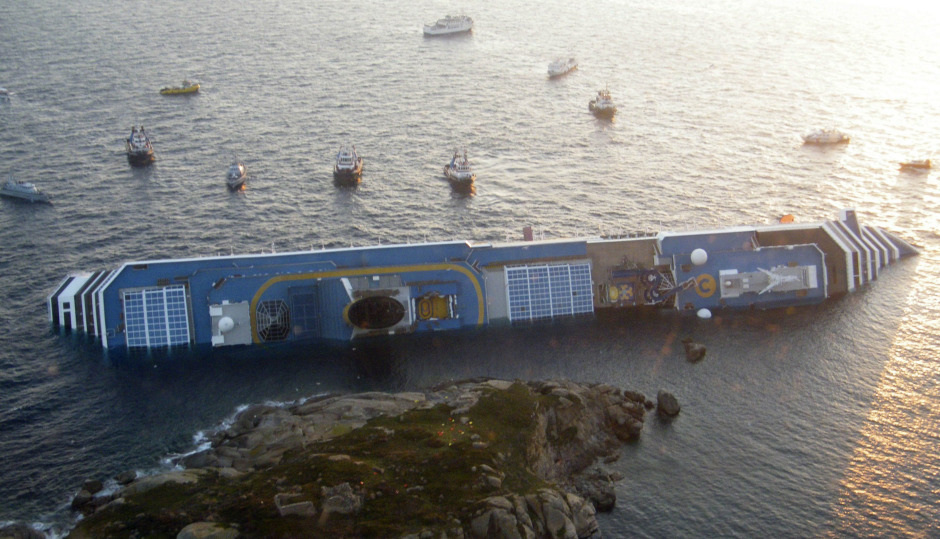
Should rougher seas dislodge the wreck and cause it to sink or break up, that could scupper any hopes for the owners, a unit of Florida's Carnival Corp., of salvaging a liner which cost hundreds of millions of dollars to build just six years ago.
Investigators say the ship was much too close to the shore and its owners, Costa Cruises, said the captain had carried out the rash manoeuvre to "make a bow" to people on Giglio island, who included a retired Italian admiral.
Mr. Schettino denies charges of manslaughter.
"You don't have to be a Nobel prize winner to understand that a ship of that size should stay far from the coast," Mr. Clini, the environment minister, said on television on Tuesday morning.
Mr. Schettino's lawyer issued a statement saying the skipper was "broken up, troubled and saddened by the loss of life". But he believed he had saved many lives by carrying out a difficult emergency manoeuvre with anchors after the accident, which turned the ship closer to the shore.
The father of the ship's head waiter told Reuters that his son had telephoned him before the accident to say the crew would salute him by blowing the ship's whistle as they passed close by Giglio, where both the waiter, Antonello Tievoli, and his 82-year-old father Giuseppe live.
Costa Cruises chief executive Pier Luigi Foschi on Monday blamed errors by Mr. Schettino for the disaster. He told a news conference the company would provide its captain with any assistance he required. "But we need to acknowledge the facts and we cannot deny human error," he added.
Mr. Foschi said company vessels were forbidden to come closer than 500 metres to the Giglio coast. Investigators say the liner, designed as a floating pleasure palace for over 3,000 customers, was about 150 metres offshore when it hit the rocks that tore a long gouge in its thousand-foot hull.
Mr. Schettino denies being too close to the coast and says the rock he hit was not marked on charts.
The calm weather which since Friday has aided the search of the wreck, by some estimates the biggest passenger vessel ever to founder, took a turn for the worse on Monday with rougher seas and a light drizzle falling. Forecasters said it would get worse.
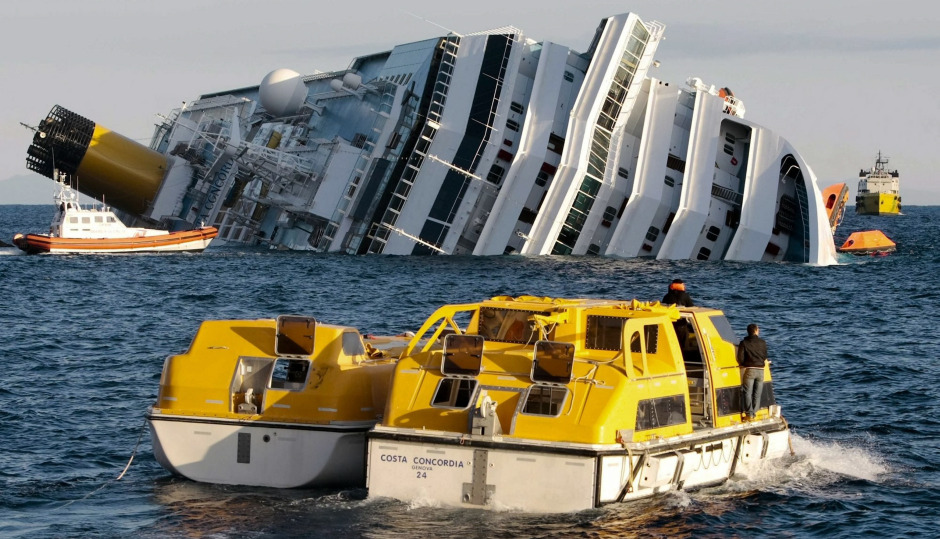
Carnival Corp, the ship's Miami-based parent company, said it estimated the impact on its 2012 earnings for loss of use alone to be around $90-million. Its share price closed down around 16 per cent on the London market.
Source: The Associated Press



Reader Comments
to our Newsletter